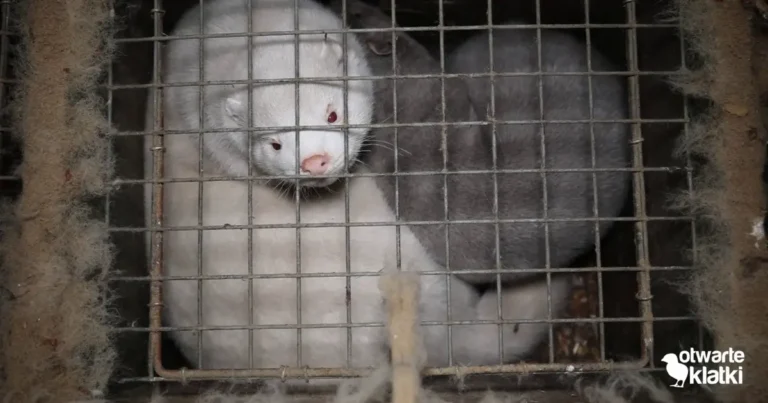
The regulations (PDF) focus on the environmental management of operations with more than 100 mink or fox in their breeding herds. They concentrate on the storage, treatment and disposal of manure, waste feed and carcasses.
When the news was released, Agriculture Minister, John MacDonell was tooting his horn declaring, “Nova Scotia is the first province in the country to establish regulations for its fur industry. We talked with Nova Scotians, we heard their concerns, and we’ve put in place regulations that will help the industry contribute to our economy while protecting our environment.”
But, not so fast, say local residents.
Since the announcement, residents in Nova Scotia have come out swinging. They are claiming that Nova Scotia’s mink farming regulations are diluted and not doing enough to ebb harmful algae blooms in streams and lakes in southwestern Nova Scotia.
“This industry has been allowed to pollute our lakes and drinking water to the point of toxicity for over 6 years and these new regulations will do very little to stop it.” says Gretchen Fitzgerald, Executive Director of the Sierra Club of Canada, Atlantic Chapter. “Worse still, existing operations will be exempt from these regulations for 3 more years and they can obtain an additional 3 year extension from the requirements to construct closed style animal housing and liquid feces storage systems” adds Fitzgerald.
In a recent news release, her group sites the following concerns with the new regulations:
- The maximum allowable limits for E. coli and phosphorous in surface water are far too high. Limits should correspond to Canadian Drinking Water Guidelines;
- Establishing a single inspector to monitor a heavily polluting industry;
- The regulations allow for mink carcasses to be “disposed of” on-site. This is a weakening from a previous draft that said carcasses had to be disposed of at an approved waste disposal site;
- The regulations allow for untreated mink manure to be disposed of on land as fertilizer;
- There is nothing in the regulation that prohibits the discharge of waste from mink farms into watercourses despite a promise from government that the regulations would do just that;
- There is no requirement for operators to monitor the impacts of their operation on groundwater;
- Biannual surface water monitoring (spring and fall) is insufficient for this industry;
- There are no requirement for monitoring air quality – which is supposed to be a part of any monitoring program (S. 34 (1) of the Fur Industry Act). Odor from these farms is a serious concern.
- Complete and utter discretion allows the Administrator to exempt operators from any requirement, such as obtaining a site approval or management plan; and,
- License holders have the right to appeal any administrative decision that goes against them but community members and concerned citizens have no such right or opportunity.
Outspoken activist against mink farming, John Halley from Forest Glen, Nova Scotia, also gives the new regulations a thumbs down.
He says, “The biggest lie of all can be seen on the Q&A sheet on these regulations (PDF) that has been put out by the Government of Nova Scotia. In response to the very first question: “What is in the fur industry regulations?” it says, “The regulations clearly state that no discharge of contaminants is permitted from the farm property to a watercourse.” My own thoughts, that’s bullshit, not minkshit. There is not one single recommended treatment that would remove water-soluble phosphorus, or any other water soluble nutrient from the waste stream runoff of a mink farm, unless you think a few acres of cat-o-nine tails will soak up the poop from a million mink.”
Read more:
Varmouth County Vanguard, Feb 1, 2013 Mink have more teeth than fur farm regulations
CBC, Jan 18, 2013 – Jocelyne Rankin responds to new industry regulations
CBC, Jan 17, 2013 – Activists slam watered down mink farming regulations
Main Website Against Mink Farming in NS – Pollution on the Tusket, Mink Stink
SouthCoast Today, Jan 20, 2013 – No one happy with new mink rules
Bancroft Opinion, Jan 20, 2013 – Opinion, Mink Regs: The ‘Scoop on Poop’
SouthCoast Today, Jan 20, 2013 – Letter: Payback time for mink regs?
The Vanguard News, Jan 22, 2013 – Fur farm regulations fall short, groups say
TAKE ACTION:
Voice your opposition to fur farms.
1. Never buy or wear fur products.
2. Write to Nova Scotia Minister of Agriculture and tell him that the new fur farm regulations don’t go far enough.
John MacDonell
Minister of Agriculture
P.O. Box 2223
Halifax, Nova Scotia
B3J 3C4
MIN_DAG@gov.ns.ca
